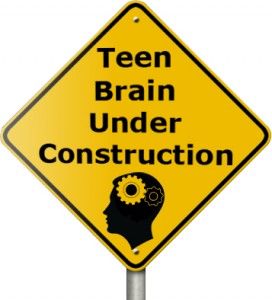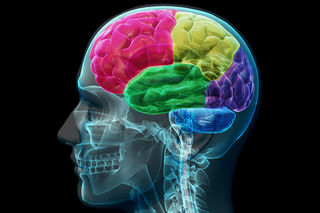THE Blog Your Teenager Must Read
THE Blog Your Teenager Must Read
Parents - your teenagers need to read this because their lives may depend on it.
Posted Jun 11, 2016

Source: Quasar/Wikimedia Commons
What your powerful teen brain needs to know

Source: Fotosearch Royalty Free Images
You now possess a Ferrari brain with a supercharger found only during your teen years. When you learn how to avoid crashing it, you’ll get to drive it to the places in your dreams.
Before I get to the topic you’ve heard before, about the risky impulsivity of teen brains, let’s start with your teen brain’s superpowers. The supercharger is a brain chemical, dopamine. When you feel that burst of pleasure, deep satisfaction, or rush of excitement triggered by something you do, think, or experience, you’re feeling a wave of dopamine surging through your brain.
Advertisement
Your brain's chemical superpower
Your brain’s dopamine reward-pleasure responses remain highest during your teen years. Your increased number of dopamine receptors, and their increased response the dopamine that is released, stimulates your teen brain like a supercharged racecar. This unique teen superpower is yours to tap into to drive your new explorations, to try new things, and to push envelopes discovering new interests and friends.Now is when you have the boosted dopamine pleasure expectations to give you the push to take chances – to do to do things exciting, creative, daring and challenging – but potentially less enticing to try later once your brain wires into mature, adult control systems. You can use your dopamine drive to ask someone out on a date, stretch your limits and take a challenging class, try out new styles of clothes and hair, take up a new sport or act in a play. Do something you’ve never tried before.
A brain owner’s manual for your unique teen brain

Source: aboutmodalfin
Your teen brain is programmed to be impulsive and to explore. That’s a good thing when it empowers you to try new foods, clubs, and extend your friendship groups. But you are also more likely to die during your teen years than at any other future time, until you are elderly. Teen death rate from preventable causes is three times that of any other time during your life.
Advertisement
Beware of the collision zone

Source: Quasar/Wikimedia Commons
You know there are times you should hold back on your teen brain’s impulsivity and make more considered choices before taking potentially risky actions. But, there’s a problem. As you are growing into an adult body and have access to the same risky temptations – alcohol, drugs, driving while texting, – your surging dopamine makes these things particularly attractive. At the same time, your teen brain has not yet wired the control centers for the judgment and high-risk avoidance to judge consequences before acting. These elements remain under construction until your mid twenties.
Even though you have the information and reasoning capabilities to understand the potential for harm associated with risky actions, you don’t yet have the strongly wired control system for communication between your brain circuits of knowledge and those programmed to go for the dopamine-pleasure.
These moderating functions nevertheless are exactly what you need to resist the pull of potential pleasure your brain anticipates arising from risky actions. You can’t wait the five to ten years for you brain’s natural development of fully wired executive function control systems. Critical choices confront you now, everyday. The good news, though, that by increasing your awareness of possible impulsive decisions, you can develop strategies to build resistance to impulsive decisions. You can have more control of your choices as you evaluate alternatives and make your best decisions now.
Build your judgment brainpower by watching your brain jump to conclusions
Answer these questions aloud one right after the other without reading ahead.1. What color is the opposite of black?

2. WHAT DOES A COW DRINK?
Source: Alamy
Was your first response to the question, “What does a cow drink?” “milk” even through you know that cows drink water? (I know, calves drink milk, but the question did say “cows”). Your response of “milk” is an example of your still impulsive teen brain’s programming to stop jump to the first response instead of waiting to consider other options.
Now try this to see if knowing about impulsive first responses is enough to put you in control of your choices.
1. Spell the word with four letters, starting with a J and rhyming with “smoke” means a funny story.
J _ _ _
2. Now, spell the four-letter word, starting with a P that that means to push on someone or thing with one finger (it also rhymes with “smoke”).P _ _ _
3. I bet you spelled “joke” and “poke” – good job.4. And what is the name for the white of an egg?
Did you first think “yolk” even though you know the yolk is the yellow part and the white is called the white or the albumin? "Yoke" is often the response given by teens. It is also the first response that comes to mind for adults, but their brains have gone through the additional wiring that gives it stronger impulse control. That is why some adults think "yoke" first, but don't say it. They wait a moment and see if they are missing something beyond that first response. That is when it comes to them that the yoke is the yellow part and the white is just called "the white" or "albumin."
Examples of impulsive first responses that will activate memories of your own
Now that you’ve experienced your brain jumping to conclusions, help build your power to resist first responses by reflecting about times you have already paid the price of your brain’s impulsive wiring.Use the list below to explore consequences of impulsive decisions often regretted by teens. You’ll build your control networks by thinking of similar times you wish you’d taken more time to think before acting.
- Making careless mistakes due to not reading all the instructions before starting
- Choosing the first multiple-choice answer that seems right without looking at the other options that included the most correct response
- Rushing through reading (so much reading) to get it over with, but finding you don’t remember what you read
- Playing video games or checking social media when you have required homework, so you had to stay up way too late or couldn’t finish your homework
- Responding impulsively to a text and regretting that you didn’t think about the possible negative consequences until after you sent it
- Deciding early in a movie or book that a character is the bad guy, then later, after finding out more about the person, realizing that you’d jumped to your opinion too quickly. Or perhaps this has happened in your real social life.
- Answering a call or taking a quick look at an anticipated text while riding a bike, crossing a busy street, or driving a car
- Not considering the possible negative outcomes of blindly following along with your friends and peers
Build impulsivity breaks for your race car brain to use when danger is signaled ahead
By using strategies you choose from the list below, you’ll experience situations to strengthen the brain networks needed to override your brain’s impulsive drives when you choose to.- When reading a novel or a history book and problems or historical disputes come up, and come across decisions made, stop and consider what might have resulted in a better outcome.
- When designing something for art or planning a report and come up with an idea or plan, consider one more way of doing it. Then evaluate which of the two will have the best outcome.
- When you solve problems in math or science, take the time to find another way to get the same solution.
- When reading email, facebook postings, blogs, or books that demonstrate negative consequences resulting from other people’s bad choices, stop and think what might have been a better decision for them to make.
- Before posting on your social media or responding to a text about something personal or private, wait several minutes. Take that time to even briefly consider any possible negative consequences that could result from an impulsive post or text.
- When you have an important decision to make, even if you are pretty sure, take a full minute think if there could be possible negative consequences, even in the future, from the choice.
Seek doors to open and boundaries to push

Source: flikr
Now that you have strategies to consider the potential consequences of your choices and actions, jump into the driver’s seat of your supercharged brain. Seek out and explore new experiences and opportunities dawning before you during these unique years of your life.

Comments
Post a Comment